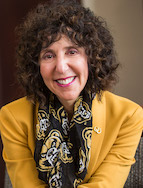Transcript
0:11
Gold.
0:15
It’s first place.
0:19
A beautiful sunrise.
0:26
Prestige and admiration.
0:30
A standing ovation.
0:34
You think that’s all being golden is about?
0:38
Take what you know, flip it. Think again.
0:44
Being golden is about putting in the hard work.
0:50
It’s a rallying cry to believe in yourself.
0:58
It’s searching for answers where others aren't looking.
1:02
Rising before the sun, and staying up long after it sets.
1:09
Launching technology and stepping into a new world.
1:17
It's about balance, and making time to experience life.
1:25
It’s defying expectations
1:27
and making people look twice.
1:33
At Oakland University, our students power Michigan.
1:39
They get internships and jobs locally
1:42
and give back to their community.
1:50
Our nurses care for you when you’re sick.
1:55
Our engineers drive the motor city into the future.
1:58
Our business leaders propel the economy.
2:03
Our educators teach your children,
2:06
and inspire the next generation.
2:11
We’re moving forward, but remembering where we came from.
